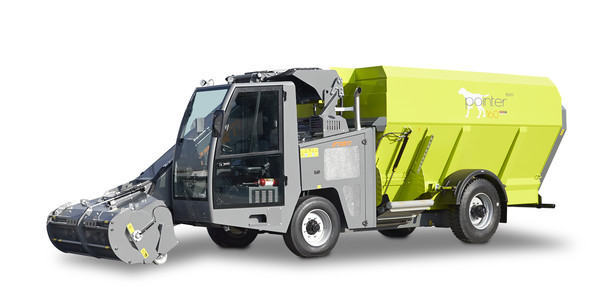
Pointer Evo, low consumption with the Storti self-propelled
At Agritechnica 2017, Storti renews the Pointer range with the goal of offering the market a more efficient self-propelled with even lower running costs. This machine is therefore particularly advantageous for small and medium farms. This is the Pointer Evo, proposed in Hannover with the new FPT Tier IV Final engines, 4 cylinders, with 170 horsepower. The machine comes in three displacements, 12, 16 and 20 cubic metres, with speeds that depend on the version, from 15 (LS model) to 25 km/h (AS). New arrivals also for the transmission to the augers, MechDrive, updated with the introduction of a dry mechanical clutch. The constructive choice adopted by the Veronese company optimizes the self-propelled’s performance. With the mechanical clutch, the rotating engine movement is transmitted directly to the auger’s reduction gear without dispersing energy between pumps and hydraulic motors. This significantly reduces fuel consumption, which is between 9.5 and 10.5 l/h for the 16- cubic metre self-propelled machine (manufacturer’s data). Hydraulic oil consumption is also low: 85 litres every two thousand hours. In short, Pointer Evo seems to have what it takes to lower considerably the bar on the running costs while maintaining very high performance. This is thanks to a cutting device made up of the Bosch Rexroth variable displacement pump (providing more torque) and the loading FPS Fiber Pick-Up System, which allows the product to be loaded in both directions of rotation. Finally, the new Pointer Evo features a restyling of the cabin, redesigned and improved especially in terms of visibility. The user’s comfort is mainly ensured by the independent hydropneumatic suspensions (standard feature on the versions with a speed of 15 km/h). The suspensions are designed to absorb the stresses generated by the movement of the cutting arm and thus prevent them from being transmitted directly to the chassis and cabin.








